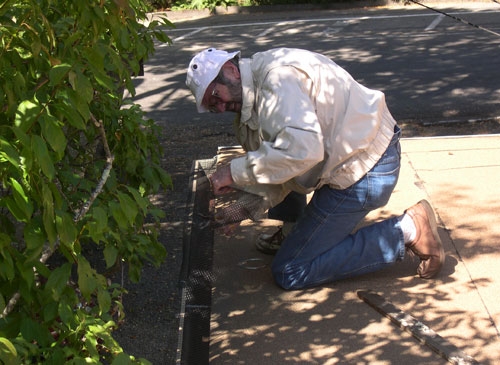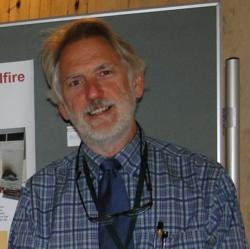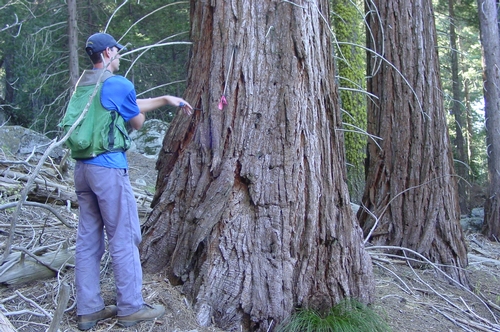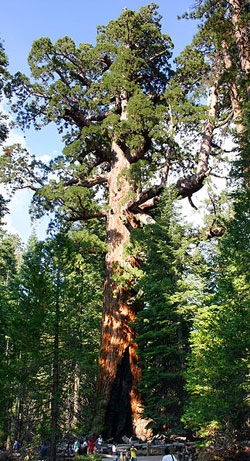Posts Tagged: Wildfire
Consider fire risk when planning improvements
Most people planning home improvement projects take into account how improvements will affect the home’s ability to withstand rain and weathering. We should also consider the threat of wildfire when planning home improvement projects this spring.
Most homes that burn during wildfires are ignited by flying embers landing on combustible material on or near homes. A wildfire passes by a home quickly, usually in a few minutes, while the exposure to flying embers can last for an hour or more. Therefore, activities homeowners undertake to make their home less ignitable from embers do the most to ensure its survival.
The most important home upgrade homeowners can do to reduce wildfire risk is to replace wood shake roofs with Class A roofs. Single-paned windows should also be replaced with dual-pane windows (with at least one pane being tempered). Combustible siding can also be vulnerable, but replacing it with non-combustible siding is less important if you have done a good job of locating and maintaining vegetation near your home. Replacing combustible decks with noncombustible decking products will also reduce risk.
Even though these upgrades are expensive, they reduce the likelihood that you will experience the cost and trauma of losing a home in a wildfire. If you cannot afford to undertake these projects this year, there are less expensive projects you can take on to reduce wildfire risk. These center on maintaining your home in good condition by replacing worn boards , sealing cracks in locations where embers can enter the home, and protecting vulnerable areas with non-combustible materials and coverings.
Even if you have already upgraded your home to resist fire by installing a new roof, windows, or deck, it is important to maintain those home components in their proper condition so embers cannot gain entrance to the home. Creating defensible space by clearning flammable vegetation and debris is also crucial to reducing your wildfire risk. For more information on the performance of building materials in a wildfire, please see http://firecenter.berkeley.edu/ or www.extension.org/surviving_wildfire. For more on creation of defensible space, contact your local fire agency and see www.livingwithfire.info/tahoe.
Suggested home maintenance projects to reduce wildfire risk
Roof:
- Plug roof openings: Install end-stops (bird-stops) at the edge of your roof if it has a gap between the roof and the sheathing (as with a clay barrel tile roof).
- Protect roof edges: Install metal angle flashing at the roof edge to protect the roof sheathing and fascia board, especially if there are gutters attached that can hold combustible pine needles. Even a Class A roof cannot protect the wood sheathing under it if the roof edge is unprotected.
- Protect roof eaves: “Box in” your open eaves with sheathing, such as a fiber cement soffit or higher grade plywood.
- Skylights: Particularly on steep or flat roofs, replace plastic skylights with skylights that use tempered glass in the outer pane.
Siding:
- Maintain siding: Fill gaps in siding and trim materials with a qood quality caulk help keep out embers. Replace warped or degraded siding.
Vents:
- Protect vents: Inspect the vents into your attic and crawl space. Make sure the screens are in good condition. Replace ¼ inch mesh screen with 1/8 inch mesh screening.
Decks:
- Maintain decks: Replace deck boards that are less than an inch thick with two inch thick boards. Remove combustible materials from under the deck.
- Protect combustible siding: Install metal flashing between a deck and combustible siding to protect it from accumulated debris that can ignite during ember attack.
- Remove flammable material from under decks: If your deck is made from wood or wood-plastic lumber decking, remove combustibles (firewood, lumber, etc.) from under the deck.
Fence:
- Replace gates: Replace combustible gates and sections of wooden fences within five feet of the house with noncombustible materials and components.
Garage:
- Adjust garage doors: Your garage door can be very “leaky” to embers. Since most people store combustibles in their garage, make sure your garage door is well sealed at the edges.
Steve Quarles takes job with insurance institute
The Insurance Institute for Business and Home Safety announced last week that Stephen Quarles will join the IBHS research team as senior scientist - hurricane/high-wind building durability and fire protection.
He will also occupy the South Carolina Wind and Hail Underwriting Association Hazard Resilience Chair at the IBHS Research Center.
Quarles has been a wood durability advisor for UC Cooperative Extension since 2000.
“Although my years with UC Cooperative Extension were very rewarding, I could not pass up the opportunity to work for IBHS and in particular at the Research Center with its scientists and staff," Quarles was quoted in the news release. "I am excited to have a more direct role in IBHS research and outreach activities that will help improve the durability of our new and existing buildings.”
Quarles has a bachelor's degree in forestry from Virginia Tech, and master's and doctorate degrees in forest products from the University of Minnesota. He is co-chair of the eXtension Wildfire Information Network (eWIN) Community of Practice, and is a member of the Society of Wood Science and Technology, the Forest Products Society, American Society of Testing and Materials, American Wood Protection Association, the National Fire Protection Association, and the Association of Natural Resource Extension Professionals.
“Steve brings a wealth of experience in the areas of wood durability, aging, water penetration, and wildfire - all critical aspects of our field and laboratory research programs," the release quoted Julie Rochman, IBHS president and CEO. “We have long admired Steve's meticulous, incredibly smart work, and look forward to having him add new dimensions to our already impressive group of property loss mitigation experts.”
Quarles begins his new position Aug. 1.
Protecting a home from wildfire for $20 or less
There are many things homeowners can do to protect their homes from wildfire that cost $20 or less, said the Insurance Institute for Business and Home Safety in a news release distributed yesterday.
The article suggests undertaking low-cost, simple but important safety steps like clearing gutters, sealing around doors and covering vents.
Last month, the organization conducted the first-ever full-scale wildfire demonstration at its South Carolina research center. The demonstration was part of a building science initiative designed to illustrate how easily some commonly used materials and items near or on houses can ignite from embers, and what homeowners can do to better protect their homes.
“Most people believe that it is the advancing line of flames during a wildfire that destroys homes,” IBHS president was quoted in the story. “Rather, it is embers or firebrands that create spot fires by igniting vegetation, debris and flammable materials that lead to ignition of the exterior of a house, as well as embers blown or drawn into buildings through gable vents, soffit vents and other openings that can ignite a house from the inside. And our laboratory test vividly demonstrated just that.”
The article credited UC Cooperative Extension for contributing to its list of suggestions for improving a home's chances of survival when a wildfire threatens. The suggestions include:
- Ensure the home has a Class A rated roof.
- Maintain a carefully managed and maintained vegetation zone within a five-foot zone adjacent to the home.
- When a wildfire is threatening, close the windows.
- Clean debris out of rain gutters.
- Install end-stops (bird-stops) at the edge of the roof if there are gaps.
- Do not store combustible items, such as firewood and lumber, under the deck.
- Keep all gaps clear of vegetative debris or cover gaps with metal siding.
- Make sure the garage door is well sealed at the edges.
UC Cooperative Extension wood durability advisor Stephen Quarles has developed an online Homeowner's Wildfire Mitigation Guide with detailed instructions for making changes to a home and its surroundings to reduce the possibility of damage from wildfires.
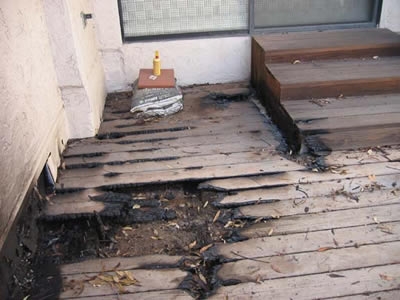
This deck had debris in the board gaps that caught fire.
Study to examine giant sequoia groves
The giant sequoias of the Sierra Nevada are the biggest and among the oldest trees on the planet. Some are 2,000 to 3,000 years old. Forestry scientists from the University of California and Cal Poly, San Luis Obispo, want to learn more about how disturbance factors affect the health of these aging behemoths.
Growth-response studies to date show that tree vigor can increase following moderate intensity disturbances such as prescribed fire or mechanical fire-hazard reduction treatments. Less certain, however, is how giant sequoias respond to lower and higher intensity disturbances. This information is of critical importance to identify the tradeoffs involved in fire prevention treatments or evaluating management options.
This summer scientists will visit native groves within Giant Sequoia National Monument, where high-intensity disturbances occurred 20 years ago. Harvests conducted at that time removed all trees except for large giant sequoia, creating a forest structure similar to what you’d expect after a high-intensity wildfire. Following the harvests, there was considerable public concern over the fate of the giant sequoias remaining. Mortality and growth in these areas has not been assessed until now.
The primary investigator on the project is Robert York, station manager of the UC Center for Forestry and an adjunct professor in the UC Berkeley Department of Environmental Science, Policy and Management. York is an expert in giant sequoia ecology. His co-investigator on the project is Scott Sink, a professor in the Department of Natural Resources at Cal Poly, San Luis Obispo. He has investigated differences between old growth and secondary forests and developed expertise in measurements of tree ring growth. The researchers will partner with forest ecologist Steve Hanna of Giant Sequoia National Monument in Porterville.
The scientists will also study tree ring widths taken from 33 giant sequoias at the UC-Whitaker Forest, where light burns and small tree removal occurred in 1967. York previously conducted field work on growth response in a giant sequoia forest subjected to a moderate-intensity disturbance. In addition to publishing a journal article on this work, researchers will hold a field trip for managers of giant sequoia groves, involve UC and CSU students in field and laboratory work, and develop a lab module for coursework at UC Berkeley.
The project is funded by a $10,000 grant intended to foster collaboration in higher education in California on issues affecting agriculture, natural resources or human sciences. In their grant proposal, the researchers said: “We have a unique opportunity to measure growth response in giant sequoia to these different levels of disturbance intensity, and therefore improve our understanding of this species’ complex life-history strategy, while informing management within giant sequoia groves.”
Lake Tahoe declares its own wildfire awareness week
The "official" Wildfire Awareness Week falls in May, but this year the Lake Tahoe community marks the event in July, according to a story in the Tahoe Daily Tribune.
UC Cooperative Extension natural resources advisor Susie Kocher told the newspaper that participation in the statewide springtime event has been low in the Tahoe Basin because many second-home owners are only there in the summer.
Because of the low participation rates, fire professionals, the Nevada Fire Safe Council, University of Nevada and University of California Cooperative Extension programs and other organizations created their own week-long event to promote wildfire and ember awareness.
“The event is being held to encourage all Lake Tahoe Basin residents to ‘Be Ember Prepared' and help protect their homes and communities from the embers that cause destruction of many homes during wildfires,” Kocher was quoted.
The article says a capstone event will be a wildfire summit on July 9 from 9 a.m. to 5 p.m. at Harvey's Casino. More information and the complete schedule of events are available on the Living with Fire website.

Lake Tahoe Basin Wildfire Awareness Week.


